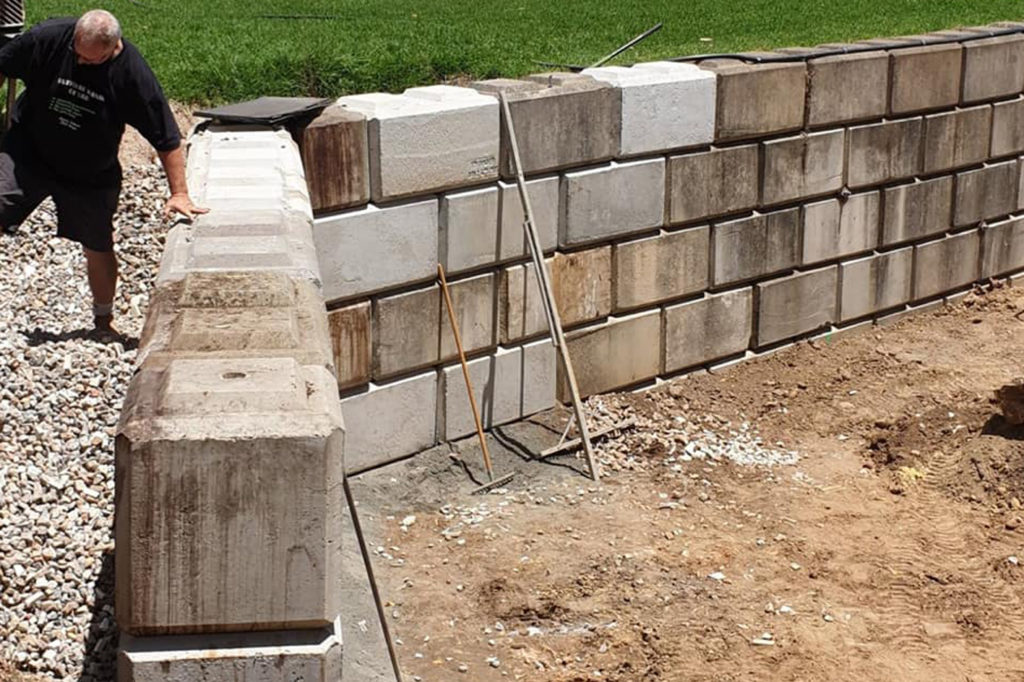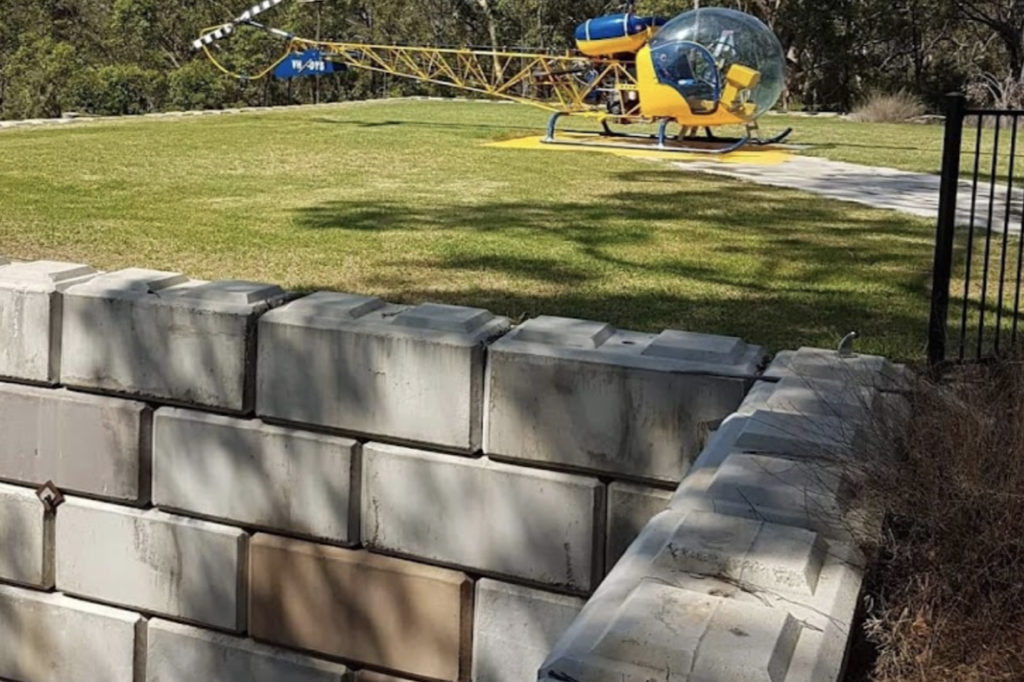Which is Best – Concrete Blocks, Besser Bricks or Cinder Blocks?
Landscaping, building retaining walls, or storage bays? What type of material should you use? If you are left scratching your head, you are in good company. Here in Sydney (and in most major cities around the country) there are many types of materials available for these projects. So, which is best? Solid interlocking (interlacing) concrete blocks are the way to go for the most durable, stable, and fire-proof solution. They do not require mortar and offer a nicer finish than Besser bricks and cinder blocks – and they will last much longer than timber products.
What is even better? You can source interlocking concrete blocks for your retaining wall and other projects from a concrete recycler. When made from recycled materials, they are just as strong as virgin-made and they are environmentally friendly.
What are Interlocking Concrete Blocks?

Think of interlocking concrete blocks as Lego for the big kids(*1). They do not need mortar to keep them together as they are made to interlock with each other. The blocks have a male stud and a female recess so they ‘lock’ into each other seamlessly. Larger concrete blocks are now even being made into architectural homes(*1).
10 Benefits of Interlocking Concrete Blocks
Interlocking concrete blocks are made of screened and cleaned high-quality concrete and brick materials. The materials are crushed and processed into blocks using state-of-the-art equipment. The result is a highly versatile re-purposed product.
1 > No mortar is required as blocks are made to snap together(*1). This is often referred to as a dry stack.
2 > Stronger than Besser and cinder blocks as they do not have hollow cores(*2,6).
3 > Excellent security.
4 > Economical and budget-friendly.
5 > 100% fire-proof(*3).
6 > Rot and rust-resistant.
7 > Environmentally friendly and recyclable(*4).
8 > Do not release toxic emissions, chemicals, or gasses (even during a fire).
9 > Reduce dust infiltration.
10 > Recycled concrete blocks are one of the most inexpensive retaining wall solutions(*5).
Can You Use Concrete Interlocking Blocks for Retaining Walls?

Absolutely! Concrete interlocking blocks are incredibly versatile. They make excellent, long-lasting retaining walls, garden beds, and for use in sloped areas.

Concrete Blocks for Storage Bays
Another common use for concrete blocks is storage bays. As they are fire-proof and strong, they add an unparalleled level of protection compared to just about any other material(*3). When you need to keep products, stock or people safe from fire and weather events, consider incorporating concrete into your building plan(*3).
Are Recycled Concrete Interlocking Blocks Environmentally Friendly?
Even after being transported, screened, and processed, recycled clean fill is far more environmentally friendly than sourcing raw materials(*7,8).
When a structure is being demolished, there are tonnes of materials that can be re-used. Rather than sending these to landfill and ending their lifecycle well ahead of time, things like concrete, bricks and tiles can be recycled into other useful products(*8).
Quick Facts About Concrete(*8)
• Concrete is one of the major sources of carbon dioxide in the world.
• Concrete is second to water in the most used resource globally.
Did you know that Quick Skips is a concrete recycler? We make concrete interlocking blocks and aggregate for backfill, substrate and footing for retaining walls.
References
*1. Engineers Australia. Interlocked concrete wall without mortar is inspired by Lego. 2016.
*2. Sole. C. How to Build an Interlocking Retaining Wall. Better Homes and Gardens. 2022.
*3. Jacobs, JP. Comprehensive Fire Safety and Protection with Concrete. European Concrete Platform. 2007.
*4. Quick Skips. FAQs. 2022.
*5. Vaglica, S. 4 Inexpensive Retaining Wall Ideas. This Old House. 2022.
*6. Civil Today. Difference Between Cinder Block and Concrete Block. N.d.
*7. Serres, N. Braymand, S & Feugeas, F. Environmental Evaluation of Concrete Made From Recycled Concrete Aggregate Implementing Life Cycle Assessment. Journal of Building Engineering. Science Direct. Vol. 5. 24 – 33pp. 2016.
*8. Watts, J. Concrete: The Most Destructive Material On Earth. The Guardian. 2019.

